
| Rudolph M. Schindler: Proportion, Scale and the "Row" |
|---|
School of Architecture
University of Hawaii at Manoa
2410 Campus Road
Honolulu, HI 96822 USA
INTRODUCTION
Rudolph M. Schindler published a comprehensive
summary of his proportional system in "Reference Frames
in Space" [Schindler 1946; Sarnitz 1988: 59-60; March and
Sheine 1993: 57-61]. In the article, he wrote: "Proportion
is an alive and expressive tool in the hands of the modern architect
who uses its variations freely to give each building its own
individual feeling" [March, 1993a: 88-101]. For Schindler,
the "unit system" of the reference frame was indispensable
in creating his signature "space architecture" [Park
and March forthcoming]. Schindler "started to use the unit
system twenty six years ago." Indeed, his 1920 Free Public
Library project attests to one of the first application of this
system [Park 1996: 72-83]. Schindler's unpublished, handwritten
notes for his 1916 Church School lectures [1] provide a source for his concern for
"rhythmic" dimensioning in architecture. He uses a
system in which rectangular dimensions are arranged in "rows".
COMPOSITION AND PROPORTION
Two or three pages
from Schindler's Church School lecture notes evidence his interests
in proportion. Schindler's early source of proportional theory
was John Beverley Robinson's articles entitled [1898-9] "Principles
of Architectural Composition," which appeared in three consecutive
issues of Architectural Record. The three articles were
presented in fifteen sections. The eighth section was titled
"Proportion" and this is the section to which Schindler
makes explicit reference in his lecture notes. Most of section
eight is devoted to the use of regulating lines in the composition
of elevations with examples from Greek temples to modern structures.
Schindler ignored this material. A case will be made that he
did not agree with the established and traditional approach of
"geometric similarity."
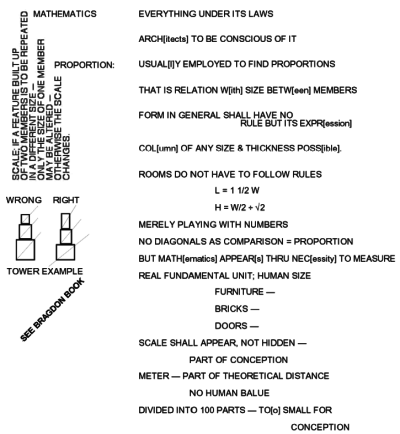
Fig. 1. Reconstruction of a portion of a handwritten page from Schindler's notes for Church School lectures, 1916. Schindler's layout has been followed. Editorial additions are shown bracketed in lower case [ ]. L, length. W, width. H, height.
Fig. 1 shows a portion of Schindler's Church School lecture notes. It emphasizes that architects should be "conscious" of mathematics, since "everything [comes] under its laws." In architecture, mathematics is "usually employed to find proportions." Having said that, Schindler then states, "form in general shall have no rule but its expression." He rejects rules that determine the proportion of columns -- "any size and thickness possible." And rules regulating the proportioning of rooms -- "rooms do not have to follow rules." Such formulae are "merely playing with numbers" (Fig. 2). As a former student of Otto Wagner, Schindler placed priority on materials, structure and functional expression. These factors determined their own dimensioning according to performance.
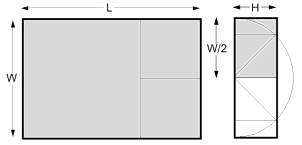
Fig. 2. "Rooms do not have to follow rules." Schindler's example of the kind of rule to be rejected. Left, room plan of ratio 3:2. Right, end wall of ratio 2Ö2:1. One Ö2 rectangle on the end wall is shown tinted.
Schindler also rejected the conventional wisdom of his time concerning regulating lines. The repetition of the same ratio throughout the parts of a whole is seen as producing a confusion of scale. This is illustrated in an example that Schindler devised after Robinson. In a three-part tower, each part is governed by identical regulating lines, simply called "diagonals." This results in elements different in scale, producing undesirable ambiguity. Schindler labeled this "wrong." In contrast, when the height of each element is the same, a constant scale is maintained, but the proportion changes as indicated by the non-parallel diagonals.[2] Schindler labeled this "right." He concluded: "No diagonals as comparison equals proportion" - a clear rejection of the hallowed principle of "geometric similarity" and its representation as regulating lines (see Fig. 1 above).
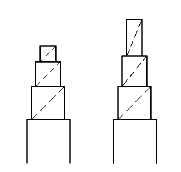
Figure 3. Robinson's tower example with captions. Left, "Failure of the method of similar dimensions, as applied to a storied-tower." Right, "Correct method of proportioning a storied-tower."
SCALE
At first glance, Schindler and Robinson
appear to agree. On the contrary, Robinson argues: "The
successive stages of a storied tower," when proportioned
by parallel, comparable diagonals, "are always wrong; the
further up you go, the more squat they seem. Such stories should
each be a little higher than the rule would dictate." Robinson
is concerned strictly with making a visual adjustment. Schindler
is not so concerned. He sees the problem as a matter of "scale"
-- a concept which Wagner discusses in Modern Architecture. With
parallel diagonals, each story is a scaled transformation in
height and width. There is then ambiguity as to what the intended
scale was. Wagner had written in regard to sculpture: "The
use of two or more scales in…a work obviously produces the
feeling that we are dealing with giants and dwarfs" [Mallgrave
1988: 84]. A point that Schindler reiterates: "The maintenance
of "scale" throughout a building is one of the most
difficult feats of the architect and there are very few buildings
which do not contain parts stricken by giganticism and dwarfism"
[March and Sheine 1993: 58]. Schindler was concerned about scale
precisely because it would imply a confusing change of the unit
of measurement, or module, in the same work.
In Fig. 4, Robinson illustrated the "system of perfect similarity," in which the rectangles share common diagonals through a center point. "The resulting rectangles are all of the same character, all elongated or all shortened …."

Fig. 4. Robinson's diagrams showing "geometrical interpretations of arithmetical ratios."
The diagonals that Robinson mentioned were, in his time, the well known regulating lines of triangulation. Hendrik Petrus Berlage's use of the "Egyptian" triangle in the elevational treatment of his celebrated Amsterdam Stock Exchange building, 1898, remains a prime example of the contemporary application of triangulation. Berlage's 1908 essay "The Foundations and Development of Architecture" provides an excellent summary of geometrical and proportional design at the end of the nineteenth century with respect to both historical analysis and design synthesis [Whyte and de Wit 1996: 165-257]. Otto Wagner, on the contrary, makes no specific mention of geometry or proportion in Modern Architecture [Mallgrave 1988]. For Wagner, modern architecture was to arise from purpose, construction and material tempered by the imagination and its expressive drive. Schindler's approval of Wagner's philosophy is reflected in his notes.
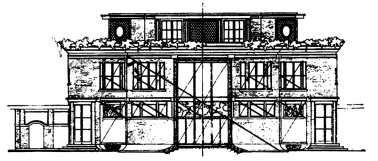
Figure 5. Regulating lines in 1916 villa, Le Corbusier, 1916.
Schindler's approach runs counter to that of Le Corbusier. Born in 1887, the same year as Schindler, Le Corbusier used regulating lines in his early works (Fig. 5), transforming the principle of geometric similitude into Le Modulor and the persistence of the golden section in his work after the second World War.
Nevertheless, the two architects agreed on the human size as a "fundamental unit." Both rejected the artificiality of the metric system. According to Schindler, the divisions of the meter are "too small for conception." He saw the meter as an architecturally meaningless measurement, an "absurdity," and the foot as an unsuitable measure for architecture.[3] In his 1916 lecture notes, Schindler recommended that the architect "choose his own "unit" out of different conditions" such as "lot, expression of building, purpose, and so on. Unit to be subdivided 1/2, 1/4." This initial idea is developed later in the 1946 "Reference Frames in Space."
THE "ROW"
Robinson likens his system of architectural
dimensions to the intervallic ratios in a musical scale. Set
out on a stretched string, Robinson's illustration of the musical
scale is closely reproduced in Schindler's notes (Fig. 6).
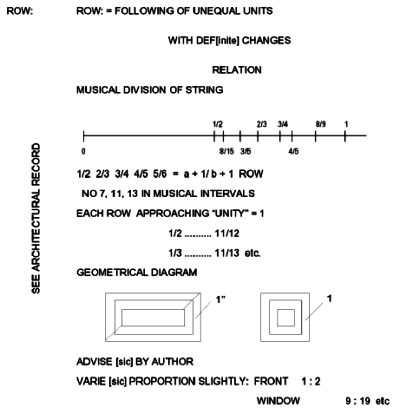
Fig. 6. Reconstruction of portion of handwritten page from Schindler's notes for Church school lectures, 1916. Editorial comments are shown in brackets [ ].
Writing of the stretched string, Robinson observed that "the subdivisions will give the notes of the gamut: 1/2, 8/15, 3/5, 2/3, 3/4, 4/5, 8/9."[4] These terms give the ratios of the octave in the modern, intonation scale. He continued:
The noticeable character of this succession is that most of the fractions advance by adding one to both numerator and denominator. We have 1/2, 2/3, 3/4, 4/5, and 5/6 although not in the diatonic scale, constitutes the minor sixth. Sixth-sevenths and 7/8 are wanting -- numbers involving 7, 11 and 13 are not found in musical intervals.
It should be noted that classical Greek musical ratios did include the numbers 7 and 11, but not 13. Ratios 6:7, 7:8, 10:11, 11:12, are cited by Ptolemy. Indeed, all such ratios from 1:2 to 24:25 with the exception of 12:13, 13:14, 22:23 occur in Ptolemy's work [Barker 1989: 270-301].
At the time that Robinson was writing it was understood that simple ratios 1:2, the duple, 2:3, the hemiolic, and 3:4 the epitritic, had been used by the Greeks in their architecture. Berlage mentioned a French writer, Charles Chipiez, who attributed these ratios in 1891 to the principle dimensions of the Parthenon. Berlage also quoted the British authority, James Ferguson, writing in the 1860s:
The system of definite proportion which the Greeks employed in the design of their temples, was another cause of the effect they produced even on uneducated minds. It was not with them merely that the height was equal to the width, or the length about twice the breadth; but that every part was proportioned to all those parts with which it was related, in some such ratio as 1 to 6, 2 to 7, 3 to 8, 4 to 9, 5 to 10 etc. … [Whyte and de Wit 1996: 193].
Instead of Robinson's "series", Schindler used the term "row", a sequence, "a following of unequal units with definite changes." A page from Schindler's notes, Figure 6, illustrates a particular "row", which is equivalent to the classical sequence of subsuperparticular numbers [March 1999: 91-100]. If a/b is a term in the "row", the next term is (a + 1)/(b + 1). Schindler's use of the term "row", die Reihe in German, appears to derive from his association with the circle around Adolf Loos, another of his influences, from Vienna. Loos's circle included the composers Arnold Schoenberg and Anton von Webern. In the years before Schindler sailed to the United States in 1914, these composers were beginning to explore die Reihe, or serial techniques in music.
Robinson gives the series:
1/3, 2/4, 3/5 4/6, 5/7, 6/8, 7/9, 8/10, 9/11, 10/12, 11/13.
1/4, 2/5, 3/6, 4/7, 5/8, 6/9, 7/10, 8/11, 9/12, 10/13, 11/14.
1/5, 2/6, 3/7, 4/8, 5/9, 6/10, 7/11, 8/12, 9/13, 10/14, 11/15.
Schindler (see Fig. 6) abbreviated the first two of Robinson's sequences to the rows "1/2 ...11/12" and "1/3 ... 11/13 etc.," and remarked, "Each row approaching 'unity' = 1" [Robinson 1898-9: 310]. The fraction 11/13 is a most unmusical ratio according to Robinson. A fact that Schindler repeated: "No 7, 11, 13 in musical intervals." It is as if Schindler is making the point that architecture does not have to be bound by the restrictions of musical intervals. This break from musical theory is supported by Daniel Barbaro who had said as much in his commentaries on Vitruvius in the sixteenth century [March 1999: 91-100]. It is also in sympathy with that "emancipation of dissonance" which both Helmoltz, as a scientist, and Schoenberg, as composer, were advocating for modern music [Dahlhaus 1987: 120-127].
It is interesting to note that alternate elements of Robinson's and Schindler's second rows can be reduced by common factors, whereas their first rows cannot. Reduction of the fractions in the first row can be seen embedded in the second row:
1/2, 2/3, 3/4, 4/5, 5/6, ...
Once reduced, all values are "root" values in the classical sense [March 1998: 58]: 1/2 is the root of the sequence 1/2, 2/4, 3/6, 4/8, 5/10, and so on. The distinction is illustrated using Robinson's and Schindler's example of 9/19, which is preceded by 8/18 and begins with the core value 1/11, the first ratio in the tenth row. If 8/18 is reduced to its equivalent root value 4/9, the core value becomes 1/6, no longer 1/11, since the sequence of the fifth row begins 1/6, 2/7, 3/8, 4/9, ... etc. A different core value now applies.[5] This shows that the row preserves scale while exhibiting distinct ratios. The row avoids the problem of scale ambiguity posed by regulating lines and illustrated by Schindler in Figures 3 and 4.

Fig. 7. Robinson's diagrams showing "geometrical interpretations of musical ratios."
Fig. 7 shows Robinson's diagrams which exhibit a relationship with musical ratios. He explains:
To lay out such a series geometrically is simple. … Draw a straight line of a certain length. From the extremities draw diagonals of 45 degrees. Using these as mitre lines surround the line with rectangles at intervals of a half a unit. The result is … a series of rectangles of which both dimensions differ from those preceding and those succeeding by a unit; yet all [are] connected by a regular system. … There is a general similarity with continual variations.
Schindler's diagrams (see Fig. 6) differ from those of Robinson in that he makes each annulus one unit wide, not half a unit. This appears to be an anomaly since the numerical rows that he abbreviated follow those of Robinson. A rearrangement of the diagrams in the manner of the ancient Greek "gnomon" produces L-shaped additions each of which is a unit wide (Fig. 8). Note the lines at the bottom, shown bold. The length of these lines may be used to name the series, or row. The line length of the first row, row-1, is 1, the second, row-2, is 2, and so on.

Fig. 8. Variation of Robinson's diagrams above in which the "gnomons" are one unit wide. The core line is shown bold. Left, is a diagram illustrating the third row since the core line is 3 units long; right, the first row with a unit core.
It is significant that Schindler illustrated a set of nested squares representing the zeroth row, row-0, with terms like a a/a. In Figure 6, Row-0, which Schindler illustrated in his lecture note, is represented by squares 1/1, 2/2, 3/3 … . These are square multiples of the unit, and find expression in Schindler's own designs.
ARCHITECTURAL EXAMPLES
Three architectural examples are given
to show how the notion of the "row" was applied by
Schindler in design: first, the fenestration of the Shampay house
project (1919), two years after the Church School lectures; then,
the ceiling structure of the How house (1925), and, finally,
the proposed room sizes of the Braxton-Shore house project (1930).
The Shampay House. The Shampay House was planned to be erected in Beverly Hills, Illinois in 1919, but was never realized (Fig. 9). In the fenestration details of the Shampay house, Schindler employs two elements from the seventh row, row-7: 1/8, 2/9, 3/10, … 17/24, … 41/48, 42/49, … The mullion + french door + mullion pattern of the east and west walls of the living room gives rise to the division 7" + 41" + 7", while the window pattern of the north and south walls of the dining room gives 7" + 17" + 7". Center to center of the mullions to the opening, the first division is in the ratio v4 : v3, and the second division is in the ratio Ö2 : 1.[6]
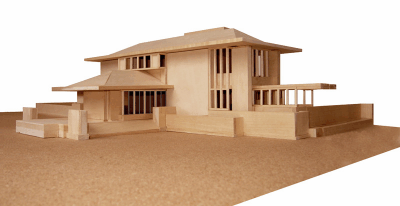
Fig. 9. Photograph of the Shampay house model showing the living room and dining room fenestration patterns.
The How House. The How House was built in 1925 in Los Angeles. The structure of the How house living room ceiling (Fig. 10) provides an explicit demonstration that Schindler had adopted row theory in practice. The ceiling is an embodied diagram of row theory. It sets out the first terms of row-0 to row-8, while subshapes of the design provide terms of row-0 from 1/1 to 9/9 without compromising scale [March 1993: 142], as well as elements of row-1, namely, 1/2, 2/3, ... 8/9 (Fig. 11).
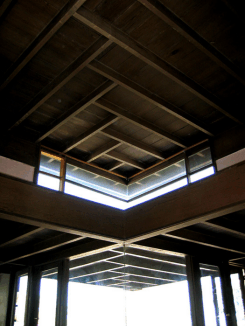
Figure 10. Photograph of the How house ceiling structure

Figure 11. a. Plan of the How house ceiling beams; b. decomposition as the first terms in row-0 to row-8), or 1/1 to 1/9; c. subshapes of squares in row-0, or 1/1, 2/2, ... 9/9; d. subshapes of rectangles in row-1, or 1/2, 2/3, ... 8/9.
The Braxton-Shore House. The Braxton-Shore house was designed to be built in Venice, California, in 1928 but was never realized (Fig. 12). The room sizes of the Braxton-Shore house include twelve dimensions (all in feet): (ground level) guestroom, 9x15 (or, in an alternative proposal, 14x11); maid's room, 10x10; bathroom, 5x8; furnace, 6x8; (second level) living room, 24x27; kitchen, 10x16; porch, 6x10; entrance, 8x8; (third floor) his room, 11x12; her room, 14x16; another room, 10x16.[7] The dimensions are summarized as the following six row equivalences:
| 10/10, 8/8 | row-0 |
| 12/11, 9/8 | row-1 |
| 8/6, 16/14 | row-2 |
| 8/5, 14/11, 27/24 | row-3 |
| 10/6 | row-4 |
| 16/10, 15/9 | row-6 |
The regulating principle, or "geometric similarity", gives 8 different equivalences:
| 10 x 10, 8 x 8 | 1 : 1 |
| 8 x 6 | 4 : 3 |
| 10 x 6, 15 x 9 | 5 : 3 |
| 8 x 5, 16 x 10 | 8 : 5 |
| 16 x 14 | 8 : 7 |
| 9 x 8 | 9 : 8 |
| 12 x 11 | 12 : 11 |
| 14 x 11 | 14 : 11 |
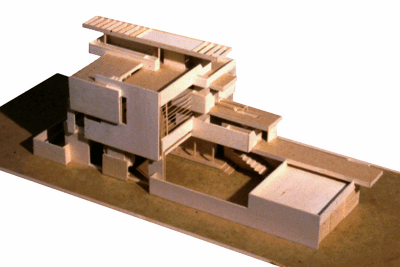
Fig. 12. Photograph of the Braxton-Shore house model.
SCHINDER'S "SPACE ARCHITECT"
According to Schindler
[1946], the unit of dimension is the choice of the architect:
He needs a unit dimension which is large enough to give his building scale, rhythm and cohesion. And last, but most important for the 'space architect', it must be a unit which he can carry palpably in his mind in order to be able to deal with space forms freely but accurately in his imagination.
Imagination is the key to Schindler's idea of "conception." In one of his Church School lecture notes he writes:
Do not start to draw before everything is shaped in your mind -- conception not to surpass reach of imagination. Feel the building, let it grow in your conception, until it gets stronger and stronger -- absolut [sic] -- the solution and its form -- and nothing more can be changed.
For Schindler, designing was essentially a mental process. Architectural drawings merely record the results; the physically executed work gives it expression. This is why he placed so much emphasis on his reference frames in space. This three-dimensional conceptual frame allowed the architect to define spaces and consider their relationships one with another -- first in his head, not on paper.
To the space architect ... a proper unit system is essential. Only two-dimensional plans can be worked out visually on paper. The space-architect deals with space forms which must be visualized and created in his mind. The only way to really perceive a 'space-form' is by being inside of it and therefore no perspective or model, even though it were sectional or transparent, could help much in designing space. In order to succeed with this difficult feat the architect not only has to have a special mental gift but he also needs a special frame of reference in order to develop his mental image. He must establish a unit system which he can easily carry in his mind and which will give him the size values of his forms directly without having to resort to mathematical computations. Measurements in figures express abstract size relations void of any human connotation and offering no assistance for the imagination. It is hardly possible to visualize a room 7'10" by 11'9" but (assuming a unit of 4 feet) you can feel a space two units wide and three long. The "foot", although it has a human basis, is too small for mental handling.
The architectural product must be a part of human life, and unless related to us in scale and rhythm is monstrous. In order to be useful the unit must have a simple relation to human stature and must be large enough to keep the necessary number of units required to size the average room small enough for easy grasp. It must be small enough to fill all needs for detail sizes by sub-dividing into simple fractions which can easily be pictured 1/2, 1/3, 1/4 at the most. For practical reasons the unit should adapt itself to certain standard dimensions already established in our industry-lumber lengths, door and ceiling heights, 16" in wood framing, etc. I have found that the four-foot unit will satisfactorily fulfill all specifications outlined above.
These three fractions plus small multiples of the four-foot unit will give all the dimensions necessary for the architect. He can dispose with measuring tapes, rulers, figured dimensions, endless additions, subtractions checking and rechecking of figures, confusing dimension lines and arrows.
Robinson gives an example of dimensional change using the method of regulating line, stating that the "fundamental idea of proportion … is that all parts share the same general character -- what geometricians call "similar"; that is, that if one part is seven high and ten wide another part that is only eight wide shall be about, or exactly, five and six-tenths high" [1899: 298] (Fig. 13). This represents a linear scale change of 80%; but Robinson does not take the opportunity to point this out, but this is precisely what Schindler objects to -- a change of scale.
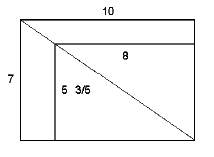
Figure 13. Robinson's example of "arithmetical proportion of breadth to height, indicated by diagonals."
CONCLUSION
In summation, Schindler's early proportional
system derived from Robinson's article has been interpreted and
some implications inherent in the theory have been discussed.
The row system is extremely simple and also fits well into his
later space reference frame. That simplicity satisfies Schindler's
demand for mental computation in spatial design. From the beginning
of his independent architectural career to its end, Schindler's
use of a unit-based proportional system remained consistent.
His early adoption of row theory, described in his 1916 lecture
notes, is an important component in the development of those
reference frames in space that are so clearly evident in his
architectural drawings.
ACKNOWLEDGMENT
The
author is deeply indebted to professor Lionel March for his technical
note, insightful comments, and advice in carrying out this article.
He has also provided much of the raw material upon which this
paper is based.
NOTES
[1] In 1918 Frank Lloyd Wright
wrote, "One of the most valuable assets of the [Chicago
Art] Institute, Emma Church, broke away from it some time ago
and has established and maintained a school of her own, doing
work that has won significant recognition. Until recently the
Art Institute had a monopoly of the professional 'artistic' side
of our culture" [Gutheim 1941, 92]. Schindler documented
a series of lectures at the Church school in a booklet of his
handwritten notes. The size of the booklet is about 8 1/2 by
5 3/4 inches. Some of them were written on the Henry L. Ottenheimer
Architect's stationery. The lecture notes are housed in the Schindler
Archive, Architectural Drawing Collection, University Art Museum,
University of California, Santa Barbara. return
to text
[2] This same example is shown in the notes for the Chouinard lectures, Los Angeles, 1931. Interestingly enough, both Schindler and Neutra were listed for the Chouinard history in the calendar for 1931/32. See http://calarts.edu/alumni/chouinard/. return to text
[3] See a recent discussion in [Tavernor 2002]. return to text
[4] Robinson used both notations a-b or a/b interchangeably to indicate a ratio, describing such paired numbers as a fraction with a numerator and a denominator. Schindler favored the fraction approach and used a/b only. In discussing the work of Robinson and Schindler the notation a/b is used exclusively for ratios. Other ratios employ the common notation a:b. return to text
[5] Schindler's theory of the "row" is mathematically generalized in March [2003]. return to text
[6] For the detailed analysis of the Shampay house, see [Park and March 2002]; also, see [Park 2003]. return to text
[7] For the detailed analysis of the Braxton-Shore project, see [Park and March 2003]; [Park 2002] also interprets the room ratios in relation to the Fibonacci and Lucas sequence. return to text
REFERENCES
Barker, Andrew. 1989. Harmonic and Acoustic Theory.
Volume II of Greek Musical Writings. Cambridge: Cambridge
University Press.
Dahlhaus, Carl. 1987. Schoenberg and the New Music. Cambridge and New York: Cambridge University Press.
Gutheim, Frederick, ed. 1941. Frank Lloyd Wright: On Architecture. New York: Duell, Sloane and Pearce.
Mallgrave, Harry Francis, trans. 1988. Otto Wagner: Modern Architecture. Santa Monica: The Getty Center Publication Programs.
March, Lionel. 1993a. Proportion is an Alive and Expressive Tool …. Pp. 88-101 in RM Schindler: composition and construction, L. March and J. Sheine, eds. London: Academy Edition.
______. 1993b. Dr. How 's Magical Music Box. Pp. 124-145 in RM Schindler: composition and construction, L. March and J. Sheine, eds. London: Academy Edition.
______. 1999. Architectonics of Proportion: a Shape Grammatical depiction of classical theory. Environment and Planning B 26, 1: 91-100.
______. 2003. Rudolph M. Schindler: Space Reference Frame, Modular Coordination and the "Row". Nexus Network Journal 5, 2.
March, Lionel and Judith Sheine. 1993. RM Schindler: composition and construction. London: Academy Edition.
Park, Jin-Ho. 1996. Schindler, Symmetry and the Free Public Library, 1920. Architectural Research Quarterly 2, 2: 72-83.
______. 2002. Rudolph M. Schindler's Braxton House: The Fibonacci and Lucas Sequence. The Quarterly of the International Society for the Interdisciplinary Study of Symmetry (ISIS-Symmetry) 2, 1-4: 313-324.
______. 2003. The Stylistic Characteristics of the Shampay House of 1919: A Formal Analysis. Submitted to Journal of Architectural and Planning Research.
Park, Jin-Ho and Lionel March. 2002. "The Shampay House of 1919: Authorship and Ownership," Journal of the Society of Architectural Historians 61, 4: 470-479.
______. 2003. Space architecture: Schindler's 1930 Braxton-Shore project. Architectural Research Quarterly 7, 1: 51-62.
Robinson, John Beverley. 1898-9. Principles of Architectural Composition. Architectural Record VIII, 1: 1-25; 2:181-223; 3: 297-331; 4: 434-465.
Sarnitz, August. 1988. R. M. Schindler, Architect. New York: Rizzoli.
Schindler, Rudolph Michael. 1946. Reference Frames in Space. Architect and Engineer 165: 10, 40, 44-45.
Tavernor, Robert. 2002. Measure, Metre, Irony: Reuniting Pure Mathematics with Architecture. Pp. 47-61 in Nexus IV: Architecture and Mathematics, K. Williams and J.F. Rodrigues, eds. (Fucecchio, Florence: Kim Williams Books).
Whyte, Iain Boyd and Wim de Wit (trans). 1996. Hendrik Petrus Berlage: Thoughts on Style, 1886-1909. Santa Monica: The Getty Center Publication Program.
ABOUT THE AUTHOR
Jin-Ho Park is an assistant professor
in the School of Architecture at the University of Hawaii. He
currently teaches architectural design studios as well as a series
of courses on Design and Computation. He earned his BS in architecture
from Inha University, Korea, and his MA and Ph.D. in architecture
from UCLA. He is the first recipient of the R.M. Schindler Fellowship
of the Beata Inaya Trust Fund, 1996/7, and twice recipient of
the UCLA Chancellor's Dissertation Fellowship, 1998/99. He was
awarded the University of Hawaii Board of Regent's Medal for
Excellence in Teaching in 2002 and the ACSA/AIAS New Faculty
Teaching Award in 2003. The focuses of his academic research
are on The Architecture of R. M. Schindler Unbuilt Works, Design
Theory and Computation, Fundamentals of Architectonics: Proportion,
Symmetry, and Compartition, Shape Grammars, Virtual Reality,
and Digital Media. He has been publishing in various refereed
journals including Architectural Research Quarterly (arq),
Environment and Planning B: Planning and Design, Journal
of the Society of Architectural Historians, Journal of
Architectural and Planning Research, and the Nexus Network
Journal.
|
Jin-Ho Park, "Rudolph M. Schindler: Proportion, Scale, and the 'Row'", Nexus Network Journal, vol. 5 no. 2 (Autumn 2003), http://www.nexusjournal.com/Park-v5n2.html |

Copyright ©2003 Kim Williams Books
